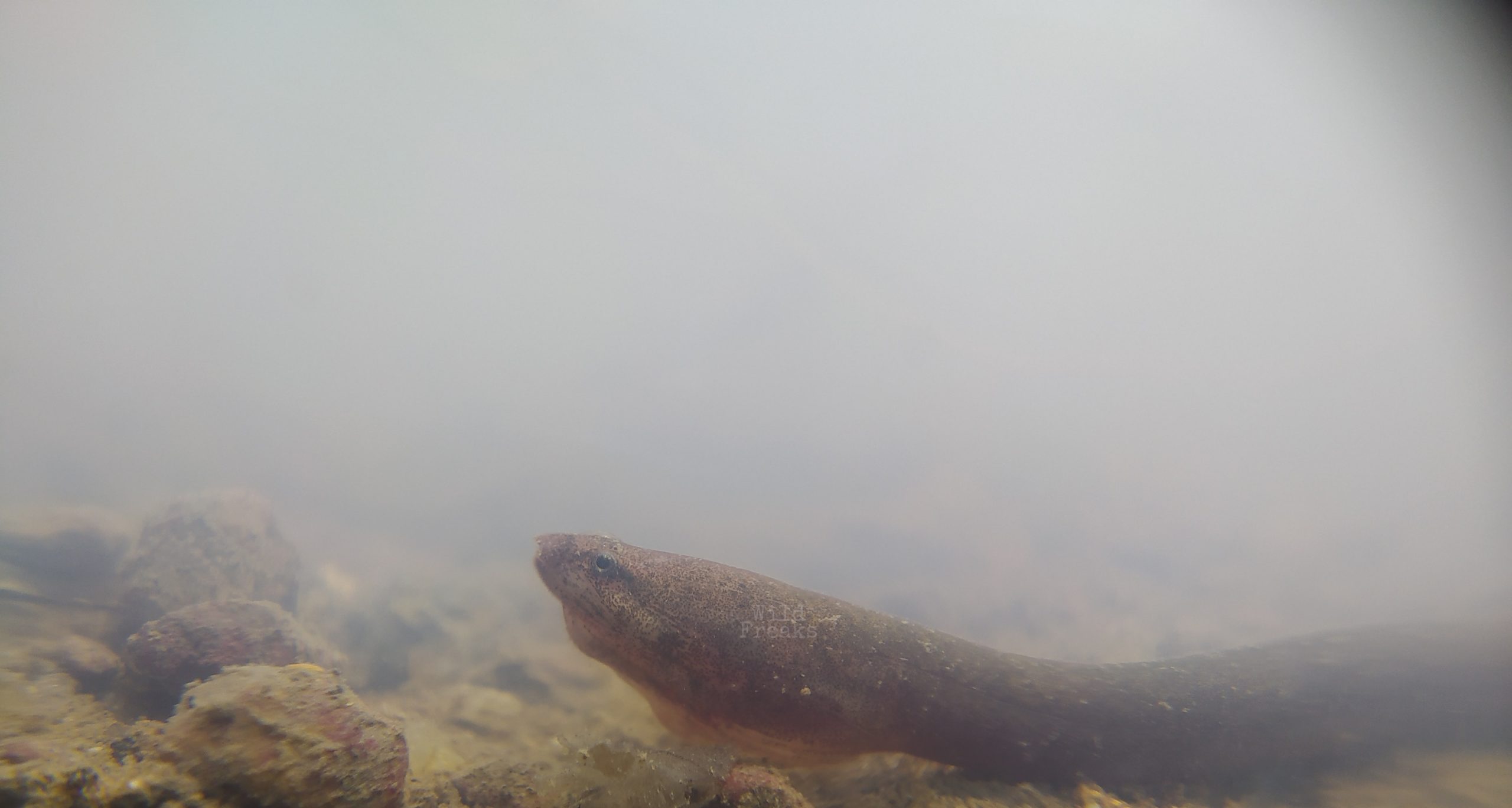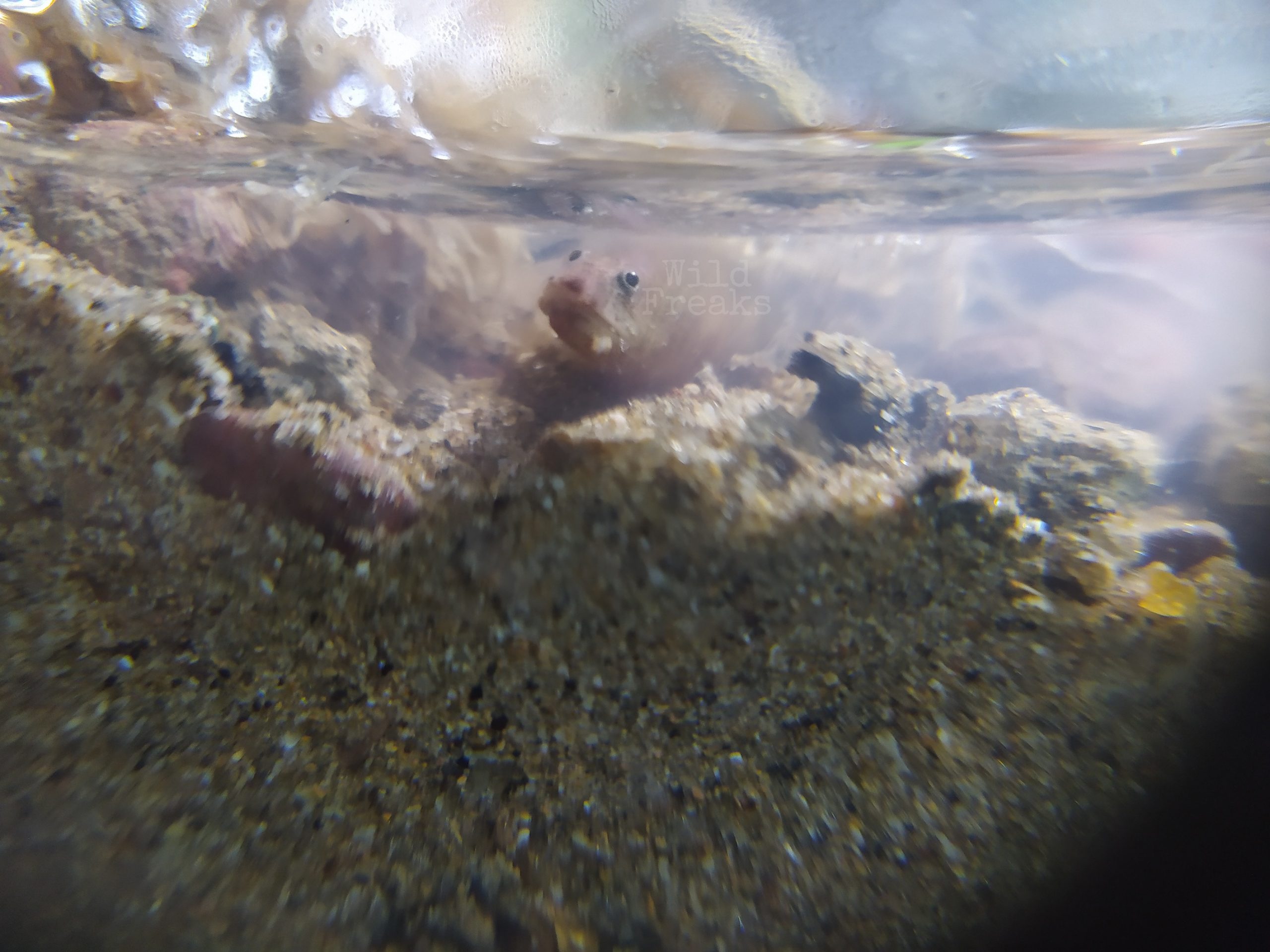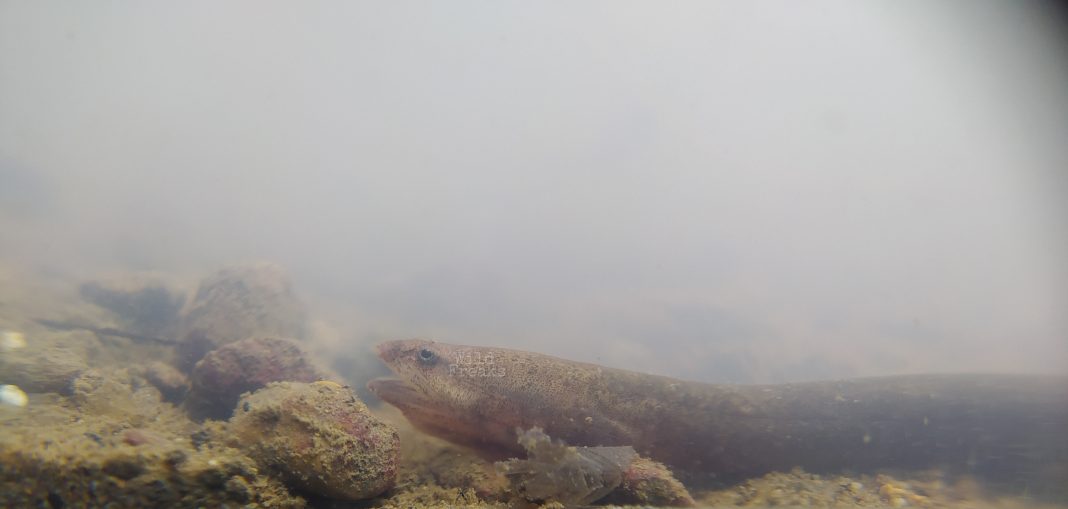Ophisternon bengalense, the Bengal eel, Bengal mud eel or one-gill eel is recorded from South Asian countries like India, Bangladesh and Sri Lanka to south-eastern Asia, Indonesia, Philippines and New Guinea. The fish may also found in Australia and Palau islands.
This species was first introduced in 1844 by McClelland.
Although some species live in clear flowing streams, most inhabit sluggish or standing waters, often with low oxygen content, commonly in dense vegetation or other covers, and are frequently burrowing or relating to, living in, or suited for both land and water. Many if not all species are capable of aerial respiration and can survive periodic drying of their environment. The adults may be found in both fresh and brackish waters along rivers and in swamps, frequently close to the river mouth. They are normally recorded among thick vegetation in muddy, still water bodies, such as lagoons, swamps, canals and rice fields.

grown-up swamp eels have for all intents and purposes no fins, the hatchlings have enormous pectoral fins which they use to fan water over their bodies, in this manner guaranteeing gas trade before their grown-up breathing contraption creates. When about a fortnight old they shed these fins and expect the grown-up structure.

The body is eel-like, head flattened, eyes very small A single slit-like gill opening on the underside of the head. Dorsal and anal fins reduced to skin folds Pectoral and pelvic fins absent. colour is between Reddish-brown to blackish-green. Length of snout about half the length of the upper jaw.
References:
Goonatilake, W.D.A., Synbranchidae, after twenty years from Sri Lanka.
Dianne J. Bray & Vanessa J. Thompson, Ophisternon bengalense in Fishes of Australia, accessed 09 Feb 2021, http://136.154.202.208/home/species/4044







